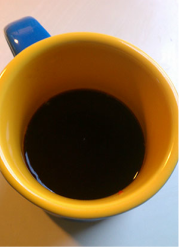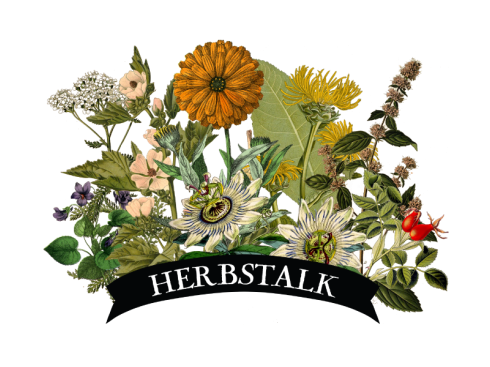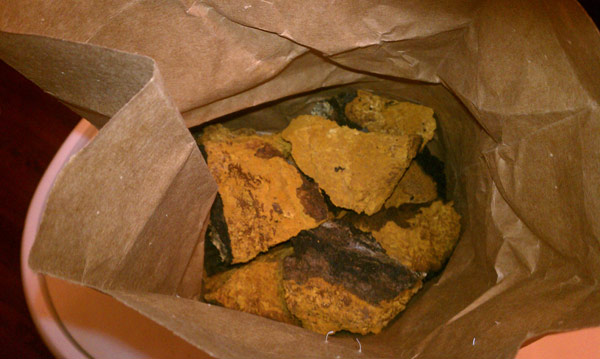
Yes, I must confess I love chaga. And chaga seems to like me. At least that’s the way I feel when I’m drinking a nice deep decoction of it – because it’s like healing black gold in a cup.
But sometimes the Chaga-Heads drive me nuts. You know them, the folks who talk all misty eyed about the wonders of chaga.
Chaga-Head: “Chaga is so amazing. I lost my head in an accident once but thanks to drinking Chaga tea regularly it grew right back!!!”
Me: “Um, how did you drink the tea if you had no head?”
Chaga-Head: “That’s how amazing Chaga is, dude!!!”
*sigh*
But seriously, I really don’t blame them.
Chaga is unusual compared with the common medicinal (or food) fungi. With those, we harvest the fruiting (reproductive – think spore producing) part that shoots up into the air while the main part lays hidden below. With chaga, the part we harvest is the energy storage part that is usually out of sight with other fungi. Think of it as something like a sweet potato. In times past, it was only the orange inner core used in medicine making, but nowadays it is recognized that the black outer rind is just as important and should be used as well. The black rind concentrates betulin and betulinic acid from the birch tree – as well as melanin with its anti-oxidant awesomeness.
It offers a pretty impressive array of healing properties including:
- Antioxidants
- Immune support
- Aids with inflammation
- Considered historically as an anti-cancer agent (probably more its antioxidants and immune support aspects)
- Helpful for gastric problems
- Supportive of the liver
- Healing to the skin – including useful for psoriasis
- Used for arterial joint diseases
- Wondrous general tonic
Sadly, chaga tends to be over-harvested and some who harvest it aren’t always the most respectful of its long term sustainability. It’s best, as always, to be aware of where it is sourced from.
I tend to work with capsules where the powder is made from grown chaga blended with properly wild crafted chaga. Occasionally I do a good double extraction. Once and a while when I need it for special cases, and in moderation, I’ll go for a nice strong decoction and just enjoy.
I don’t mess with just plain just tea like a decoction, but instead I break out the crockpot and set it on low, throw in a couple of small chunks then let it build to a coffee blackness over six to eight hours. I will mix it with such things as ginseng, ashwagandha, cacao, cinnamon or vanilla bean pods. Then I drink it hot with some yummy local honey.
As the Archies might have said:
Chaga, Chaga,
You are my fungi love
And you’ve got me wanting you.
Oh, Chaga Baby!





 RSS Feed
RSS Feed